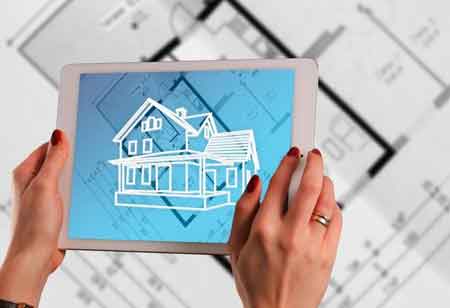THANK YOU FOR SUBSCRIBING
4 Ways to Implement Retail Proptech to Boost Mall Profitability
The initial cost of adopting the latest technologies may be high, but this investment will convert into loyal customers and more profitable malls for a lifetime.

By
Apac CIOOutlook | Friday, February 28, 2020
Stay ahead of the industry with exclusive feature stories on the top companies, expert insights and the latest news delivered straight to your inbox. Subscribe today.
The initial cost of adopting the latest technologies may be high, but this investment will convert into loyal customers and more profitable malls for a lifetime
FREMONT, CA: Property technology is the use of information technology to assist individuals and companies in researching, buying, selling, and managing real estate. This technology has transformed the real estate industry by focusing on the use of digital innovation to address the latter’s requirements.
With the need for smart spaces, expansion of the online marketplace, and automation-linked productivity, the use of proptech has significantly increased over the years. The life cycle of the real state is continuously monitored and tested for redesigning with the help of technology.
Simplifying Operations & Leasing
Mall owners and developers have optimized operations by implementing AI, Bigdata and analytics, virtual reality and augmented reality, and computer-aided design (CAD), which eliminated the over dependence on manpower.
Technology is making its way in the mall-leasing business, and owners and developers are embracing these solutions to conduct real estate transactions. Viewing actual CAD renderings of properties can help filter their search using factors like demographics, tax incentives, transit options, etc.
Big data also gives brokers the ability to match investors to property type and streamline the entire transaction process.
Enhancing Customer Experience
Today, the retail customer profile is dominated by millennials who are well versed in technologies, and they expect the same from the retail spaces as well. This has opened the doors for experiential shopping built around comprehensive shopping experience. Mall owners now focus on different areas like fast-paced check-out to identify the buying behavior of the customers and create an integrated shopping experience.
The retail industry has combined its online and offline businesses with major players developing apps and mobile/computer websites to make the buying experience more complete for the customers.
Efficient Mall Development
Almost 50 to 60 percent of the overall cost of a real estate project revolves around the construction process. Therefore, it is crucial to obtain the right materials and use the proper construction techniques to save costs and increase profitability. In India, shopping mall developers adopt advanced and green materials to make their structures more effective and reduce environmental pollutions.
With proptech at the center of mall development, the latest building technologies are being adopted to optimize construction time and save cost.
• The prefabrication technique boosts construction speed and saves valuable time.
• Using 3D printing helps achieve better utilization of space and is also cost-effective while increasing construction time.
• The use of environmental-friendly building materials helps reduce pollution and also accelerates the entire construction process.
• Robotic technology influences construction pace positively and cuts down overall cost by alleviating dependence on human resources.
• Implementing building information modeling technique helps mall developers to achieve better collaboration and communication along with better pre-construction project visualizations.
Utilizing Technology in Mall Designing
Developing a mall requires specialized design and layout. Implementing new technologies and software will help understand the design of a mall and make it more customer-centric.
To optimize mall design and focus on customer experience, architects and designers have turned to software such as Revit and Archi Cad. These tools help in designing the ideal placement of stores in the malls to increase visibility, which will enhance the customer experience.
Incorporating the necessary technology while designing a mall will help achieve high visibility and proper placement of stores. And also optimize circulation areas, give better accessibility to avoid outward obstacles, and smooth optimal flow of footprints inside, and create more open spaces for experience centers. These elements will ensure future profitability by attracting key tenants and running cost-effective operations.
See Also: Top Retail Tech Companies





